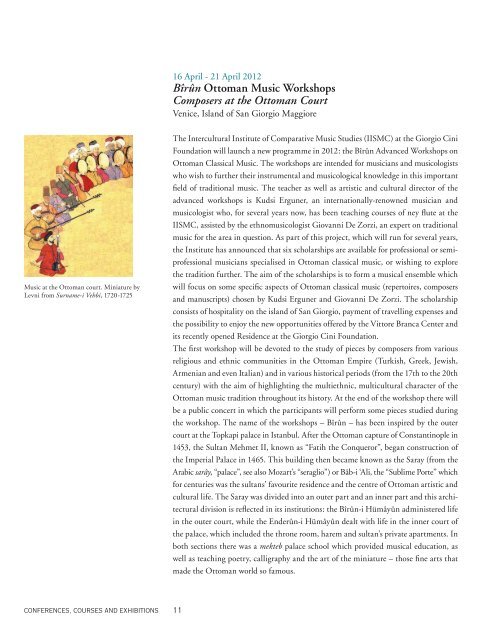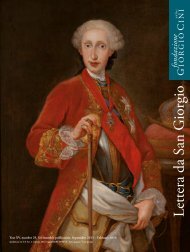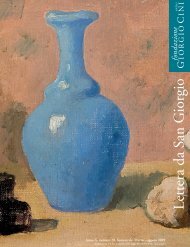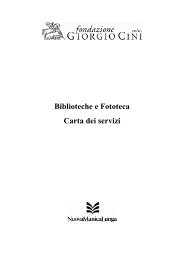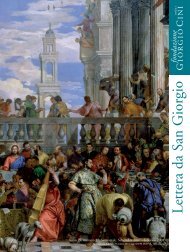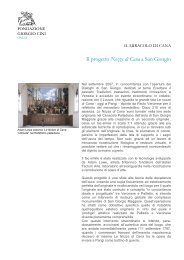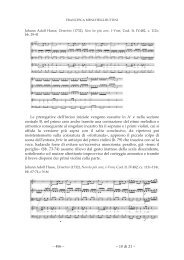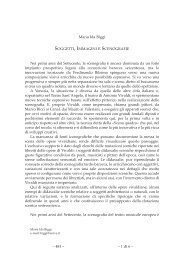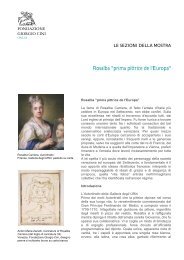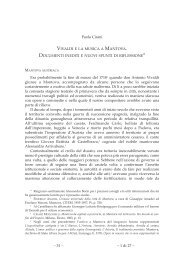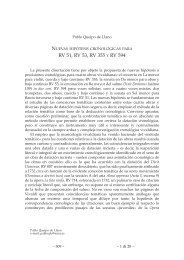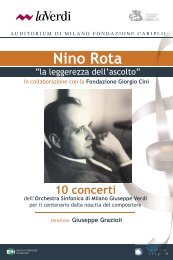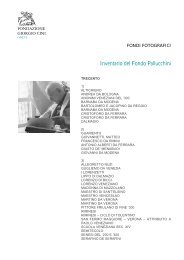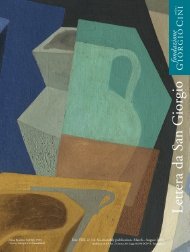Forthcoming Activities - Fondazione Giorgio Cini
Forthcoming Activities - Fondazione Giorgio Cini
Forthcoming Activities - Fondazione Giorgio Cini
You also want an ePaper? Increase the reach of your titles
YUMPU automatically turns print PDFs into web optimized ePapers that Google loves.
music at the Ottoman court. miniature by<br />
Levni from Surname-i Vehbi, 1720-1725<br />
conferences, courses and exhibitions<br />
16 april - 21 april 2012<br />
Bîrûn Ottoman Music Workshops<br />
Composers at the Ottoman Court<br />
Venice, island of San <strong>Giorgio</strong> maggiore<br />
The intercultural institute of comparative music Studies (iiSmc) at the <strong>Giorgio</strong> cini<br />
foundation will launch a new programme in 2012: the Bîrûn advanced Workshops on<br />
Ottoman classical music. The workshops are intended for musicians and musicologists<br />
who wish to further their instrumental and musicological knowledge in this important<br />
field of traditional music. The teacher as well as artistic and cultural director of the<br />
advanced workshops is Kudsi Erguner, an internationally-renowned musician and<br />
music o logist who, for several years now, has been teaching courses of ney flute at the<br />
iiSmc, assisted by the ethnomusicologist Giovanni De Zorzi, an expert on traditional<br />
music for the area in question. as part of this project, which will run for several years,<br />
the institute has announced that six scholarships are available for professional or semiprofessional<br />
musicians specialised in Ottoman classical music, or wishing to explore<br />
the tradition further. The aim of the scholarships is to form a musical ensemble which<br />
will focus on some specific aspects of Ottoman classical music (repertoires, composers<br />
and manuscripts) chosen by Kudsi Erguner and Giovanni De Zorzi. The scholarship<br />
consists of hospitality on the island of San <strong>Giorgio</strong>, payment of travelling expenses and<br />
the possibility to enjoy the new opportunities offered by the Vittore Branca center and<br />
its recently opened Residence at the <strong>Giorgio</strong> cini foundation.<br />
The first workshop will be devoted to the study of pieces by composers from various<br />
religious and ethnic communities in the Ottoman Empire (Turkish, Greek, Jewish,<br />
armenian and even italian) and in various historical periods (from the 17th to the 20th<br />
century) with the aim of highlighting the multiethnic, multicultural character of the<br />
Ottoman music tradition throughout its history. at the end of the workshop there will<br />
be a public concert in which the participants will perform some pieces studied during<br />
the workshop. The name of the workshops – Bîrûn – has been inspired by the outer<br />
court at the Topkapi palace in istanbul. after the Ottoman capture of constantinople in<br />
1453, the Sultan mehmet ii, known as “fatih the conqueror”, began construction of<br />
the imperial Palace in 1465. This building then became known as the Saray (from the<br />
arabic sarây, “palace”, see also mozart’s “seraglio”) or Bâb-i ‘ali, the “Sublime Porte” which<br />
for centuries was the sultans’ favourite residence and the centre of Ottoman artistic and<br />
cultural life. The Saray was divided into an outer part and an inner part and this architectural<br />
division is reflected in its institutions: the Bîrûn-i Hümâyûn administered life<br />
in the outer court, while the Enderûn-i Hümâyûn dealt with life in the inner court of<br />
the palace, which included the throne room, harem and sultan’s private apartments. in<br />
both sections there was a mekteb palace school which provided musical education, as<br />
well as teaching poetry, calligraphy and the art of the miniature – those fine arts that<br />
made the Ottoman world so famous.<br />
11


